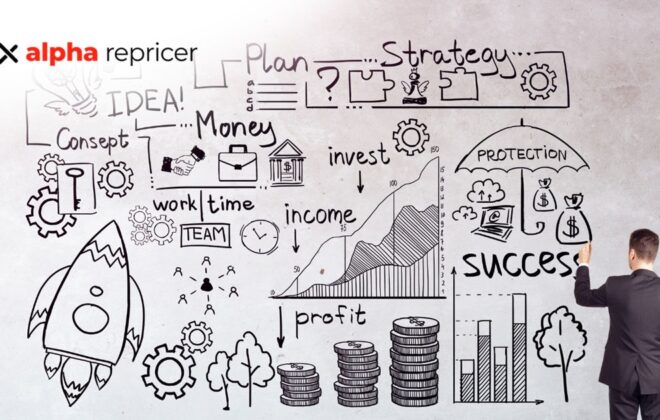40 Terms used by Amazon Sellers
Have you ever been in a group of physicians or software developers and heard strange terms thrown around. You listen harder in an attempt to make heads or tails of the conversation. For a while, you might think you are in a foreign place. That is because every industry develops a language that is unique to it. The same is true for Amazon sellers. We have gathered a list of forty commonly used terms that Amazon sellers use. If you are starting out, these can help you understand what they’re all saying.
ASIN (Amazon Standard Identification Number)
This is one of the terms used by Amazon sellers exclusively. Amazon assigns the ASINs. It is a unique number consisting of 10 letters and/or numbers that identify items. The ISBN for books is the same as ASIN. By now, the Amazon catalog has probably assigned ASIN to almost any product available. If you do not find an ASIN for your item, then Amazon will create one for that item.
Back-ordered
This means the merchant does not have the inventory of an item but it is on order and they expect it to be in stock soon. Amazon allows most products to be listed as back-ordered. The merchants can accept orders for that item and ship once it is back in stock.
BMVD (Books, Music, Video, and DVD)
Book, magazines, or other publications, sound recordings, video recordings, and/or other media products in any format. BMVD Products include subscriptions to magazines, book clubs, music clubs, and similar arrangements.

Brand Registry
This is an Amazon program to protect the intellectual property of the sellers. Once a seller has registered a brand it is on record as that merchant’s property and makes it easier to protect the merchants’ brands from the copyright and trademark violation.
BSR (Amazon’s Best Sellers Ranking)
This term stands for an important aspect of Amazon seller’s business. It is the rank that Amazon gives products based on their sales volume. Each category has its own ranking. The Sales Rank interval can be between 1 and 1 million plus. The smaller the number the better it is as a prospective product to sell.
Buy Box aka BB
Every Amazon seller uses this term frequently, either in frenzy or jubilation. The coveted prize of Amazon sellers. The box on the right of a listing that has the ‘Add to Cart’ and ‘Buy Now’ buttons. Featured sellers compete for this position. It is the button most buyers click to make their purchase. A listing may have many sellers. Amazon, through an undisclosed algorithm, chooses which seller will be in the Buy Box. Inspite of the secrecy behind the algorithm, we know some of the factors that can help win the Buy Box.
Category
Pretty self-explanatory. Each category can have sub-categories. Amazon restricts new sellers from selling in some categories. Amazon has restrictions on categories such as Beauty products and Toys.
COGS (Cost Of Goods Sold)
The cost of the inventory items that the merchants pay. You can deduct these when filing taxes.
Dropshipping
Dropshipping is the process of selling a product without carrying inventory or shipping the goods. The product manufacturer maintains the inventory and ships directly to the customer.
EAN (European Article Number)
A 13 digit code used to identify products in the European network. We also know it as International Article Number or IAN.
FBA (Fulfillment by Amazon)
The seller ships his/her inventory to Amazon. Amazon then picks, packs, and ships it. Merchants do have to individually wrap the items and label them before shipping them to the fulfillment center. Amazon can charge fees for storage. FBA items automatically qualify for prime shipping which is 2-day shipping thus giving them a higher chance of winning the Buy Box.

FBM (Fulfilled by Merchant)
Previously labeled MFN. This stands for fulfilled by the merchant. The sellers, themselves, are picking, packing, and shipping the order to the customer.

FC (Fulfillment Center)
A fulfillment center is Amazon’s warehouse. It is crucial to immediate shipment. Amazon stores and then preps the sellers’ inventories here. When the items sell, Amazon fulfillment center employees ship them. They also handle returns.
Feedback
Buyers have a 90-day window to leave feedback on the merchants’ performance such as shipping speed, packaging, responsiveness, and professionalism. It is a public rating system and shows up under the merchants’ store name in the list of sellers. The rating can range from one star to five stars.
FNSKU (Fulfillment Network Stock Keeping Unit)
Merchants pack and mark each item of inventory with these numbers assigned by the fulfillment center. This enables the picker’s scanners to identify the product of the particular merchant for each sale.
Fulfillment Fee
This is the fee Amazon charges to pick, pack, and ship products in the FBA program.
Inventory
The merchandise that is physically available for sale.
IP (Intellectual property)
These are brands that the merchants own. Amazon has strict rules about intellectual property infringement. Sellers who violate IP rights of brand, trademark, or copyright rules may end up being suspended for life.
IPI (Inventory performance index)
This is another term used by Amazon sellers exclusively. This is a score Amazon assesses to encourage merchants to keep their merchandise moving. The formula of how they calculate is unclear. The range of the index is 0 – 1000. Amazon fines the merchants for falling below 400. At this time IPI applies to FBA sellers on Amazon.com only.
ISBN (International Standard Book Number)
This is a unique 13-digit number that is assigned to every book in print. On Amazon, the ISBN of a book is the same as its ASIN.

MAP (Minimum Advertised Price)
This is the minimum price that the manufacturers of a product would expect resellers to sell for. It keeps the value of the product at a certain level. Manufacturers do not always implement it.
Marketplace
Amazon Marketplace, a term used for an e-commerce platform that Amazon owns and operates. Third-party sellers can use this platform to sell their merchandise globally. At this writing, Amazon has 16 marketplaces around the world. Fourteen of these marketplaces allow third-party sellers.
MOQ (Minimum Order Quantity)
Some wholesalers require sellers to buy a minimum number of items in order to place an order. When merchants are negotiating with manufacturers for private label products, the manufacturers usually require an MOQ.
MSRP (Manufacturer’s Suggested Retail Price)
The big manufacturers with brand names always have a suggested price they expect their products to be sold for. Merchants may or may not sell at this price.
Net Profit
Final amount received after subtracting all the operating costs from the total inflow.
OA (Online Arbitrage)
This term is used by Amazon sellers a lot these days along with RA. It is a term used for when sellers buy merchandise from online retailers and reselling on Amazon.
OOS (Out of stock)
I wonder what that means.
PL (Private Label)
Many merchants buy generic products and put their own labels and logos with proper agreements with the manufacturer. Many manufacturers agree to do the labeling and packaging as well. This term is used by Amazon sellers to refer to the merchants creating and branding their own products. Also called WL or White Label.
PPC (Pay Per Click)
This is an advertising strategy. Obviously, merchants pay for the ad when buyers click on the ad.
Pro Merchant
The seller account that is known as Professional Seller or Pro Merchant. It costs $39.99 per month plus a percentage commission for the sale of an item. If a merchant sells more than 40 items a month, this is the better option. The other option is the Individual Seller plan. The individual selling plan costs $0.99 per item sold plus a percentage commission. The commission depends on the category. Serious sellers opt for the professional plan.
Quarter
A quarter refers to a three-month period in the financial calendar. Each one-fourth of a year is typically expressed as Q1, Q2, etc. Q1: January – March Q2: April – June Q3: July – September Q4: October – December
RA (Retail Arbitrage)
Some merchants do sourcing locally and buy products from retail stores to sell on Amazon.
RAV (Report a Violation)
If a seller feels his or her IP has been stolen, they can submit a complaint using the online form. If enrolled in the Brand Registry, a merchant can use RAV, a tool within the program to report patent theft and other IP claims.
Repricing & Repricers
Repricing is the way to maintain competitive prices for your items. Sellers use automated repricers to monitor the prices and adjust the prices to compete with other sellers. An Amazon Repricing tool gives you an edge. Using an Amazon repricing software helps you keep your products at competitive price in the marketplace. Sellers must always opt for an amazon repricing tool which is smart and fast.
Alpha Repricer is one of the best Amazon repricer in the market. It reprices within 2 minutes making it the fastest.
ROI (Return On Investment)
This is a bookkeeping term. The money a merchant makes above the investment he or she has made. Amazon sellers have to keep a sharp eye on ROI if the margin may be very small.
SC (Seller central)
Amazon Seller Central is one of the terms used by Amazon sellers for the merchants’ dashboard. This is where they can keep track of their orders, inventory, claims, and other useful information. Only sellers have access to this interface through their own seller account.
SEO (Search Engine Optimization)
The terms that merchants use in their listing, determines how well their products rank in searches done on Amazon or Google. Search engine optimization or SEO is the practice of choosing the most relevant terms.
SFP (Seller fulfilled prime)
When Amazon sellers who ship their own orders, offer expedited shipping. This term was introduced in 2015 when th eprogram started.
SKU (Merchant stock-keeping units)
This is a unique identification a seller assigns to each item. It is a product identification code for a product. It is often a machine-readable bar code that helps track the item for inventory. The SKU can have the key in it for size, color, location, etc. Importantly, it is basically a method by which the merchant can keep track of his/her inventory.
UPC (Universal Product Code)
A 12 digit barcode that almost all products in the retail world have. It is one of the identification numbers that you can use to look up items on Amazon.
This is an evolving list. Naturally, the language is constantly developing. For example, FBM used to be MFN. As the marketplace evolves, Amazon policies change, and merchants need to communicate their thoughts on the subject. With all this selling going on who has time to say the whole thing. Subsequently, an acronym is born.
Conclusion:
If you have found this article useful, head over to our blog section and find out how our repricing tool can help!
Author






